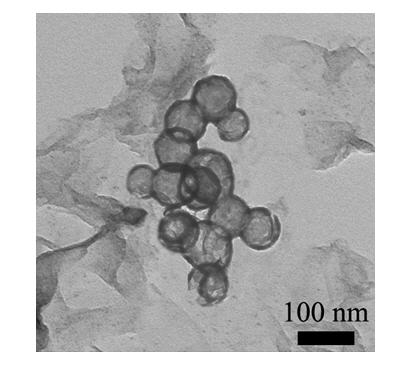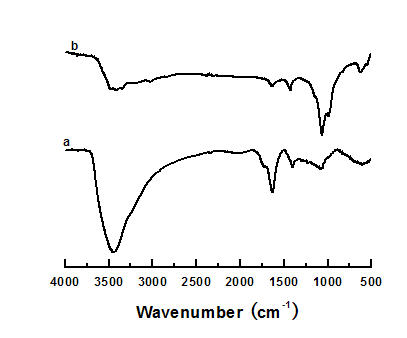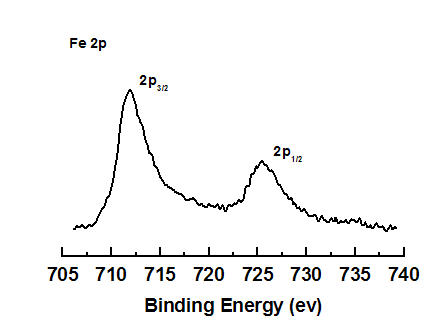Nano iron phosphate hollow sphere/graphene composite material and preparation method thereof
A nano-iron phosphate and composite material technology, applied in electrical components, battery electrodes, circuits, etc., can solve the problems of poor electronic conductivity, limited electrochemical performance of LiFePO4, low diffusion rate, etc. The effect of large-scale industrial promotion and simple equipment
- Summary
- Abstract
- Description
- Claims
- Application Information
AI Technical Summary
Problems solved by technology
Method used
Image
Examples
Embodiment 1
[0038] Graphene oxide was ultrasonically dispersed with deionized water for 30 min to obtain a 1 mg / ml suspension. In 20 mL of deionized water, add (NH 4 ) 2 Fe(SO 4 ) 2 ·6H 2 O and phosphoric acid, 0.5 ml of graphene suspension, and then add 1.2 g of urea (urea) as a precipitant and 0.1 g of sodium dodecyl sulfate (SDS) as a surfactant, in which the ferrous ammonium sulfate hexahydrate The amount is 0.1 mmol. The mixture was ultrasonically dispersed for 1-10 minutes. After uniform dispersion, pour it into a stainless steel reaction kettle lined with polytetrafluoroethylene, close the reaction kettle, place it in an oven, heat at 80-100°C for 3-12 hours, and cool to room temperature. The product was washed by centrifugation with ethanol and deionized water for 6-8 times respectively, and the product obtained by centrifugation was placed in a vacuum drying oven at 80-100°C for 10-24 h in a vacuum to obtain a nano-iron phosphate hollow sphere / graphene composite material. ...
Embodiment 2
[0040] Graphene oxide was ultrasonically dispersed with deionized water for 30 min to obtain a 1 mg / ml suspension. In 20 mL of deionized water, add (NH 4 ) 2 Fe(SO 4 ) 2 ·6H 2 O and phosphoric acid, 1 ml of graphene suspension, and then add 1.2 g of urea (urea) as a precipitant and 0.1 g of sodium dodecyl sulfate (SDS) as a surfactant, the amount of substance of ferrous ammonium sulfate hexahydrate 0.1 mmol. Place the mixture in an ultrasonic wave and ultrasonically disperse for 1-10 minutes. After the dispersion is uniform, pour it into a stainless steel reaction kettle lined with polytetrafluoroethylene, close the reaction kettle, and heat it in an oven at 100-120 ℃ for 3-12 hours. , cooled to room temperature. The product was centrifuged and washed 6-8 times with ethanol and deionized water respectively, and the product obtained by centrifugation was placed in a vacuum drying oven at 50-100 °C for 10-24 h in a vacuum to obtain a nano-iron phosphate hollow sphere / graph...
Embodiment 3
[0042] Graphene oxide was ultrasonically dispersed with deionized water for 30 min to obtain a 2 mg / ml suspension. In 20 mL of deionized water, add (NH 4 ) 2 Fe(SO 4 ) 2 ·6H 2 O and phosphoric acid, 0.5 ml of graphene dispersion, then add 0.6 g of urea (urea) as a precipitant and 0.05 g of sodium dodecyl sulfate (SDS) as a surfactant, the amount of ammonium ferrous sulfate hexahydrate is 0.05 mmol. Place the mixture in an ultrasonic wave for ultrasonic dispersion for 1-10 minutes. After the dispersion is uniform, pour it into a stainless steel reaction kettle lined with polytetrafluoroethylene, close the reaction kettle, and heat it in an oven at 60-100 °C for 3-12 hours. , cooled to room temperature. The product was centrifuged and washed 6-8 times with ethanol and deionized water respectively, and the product obtained by centrifugation was placed in a vacuum drying oven at 50-100 °C for 10-24 h in a vacuum to obtain a nano-iron phosphate hollow sphere / graphene composit...
PUM
| Property | Measurement | Unit |
|---|---|---|
| Particle size | aaaaa | aaaaa |
| The average particle size | aaaaa | aaaaa |
| Discharge specific capacity | aaaaa | aaaaa |
Abstract
Description
Claims
Application Information
 Login to View More
Login to View More - R&D
- Intellectual Property
- Life Sciences
- Materials
- Tech Scout
- Unparalleled Data Quality
- Higher Quality Content
- 60% Fewer Hallucinations
Browse by: Latest US Patents, China's latest patents, Technical Efficacy Thesaurus, Application Domain, Technology Topic, Popular Technical Reports.
© 2025 PatSnap. All rights reserved.Legal|Privacy policy|Modern Slavery Act Transparency Statement|Sitemap|About US| Contact US: help@patsnap.com



